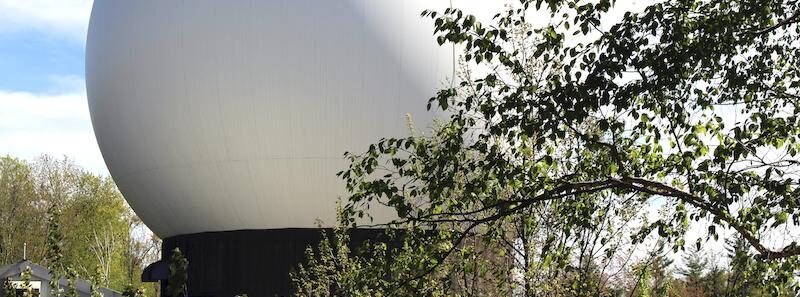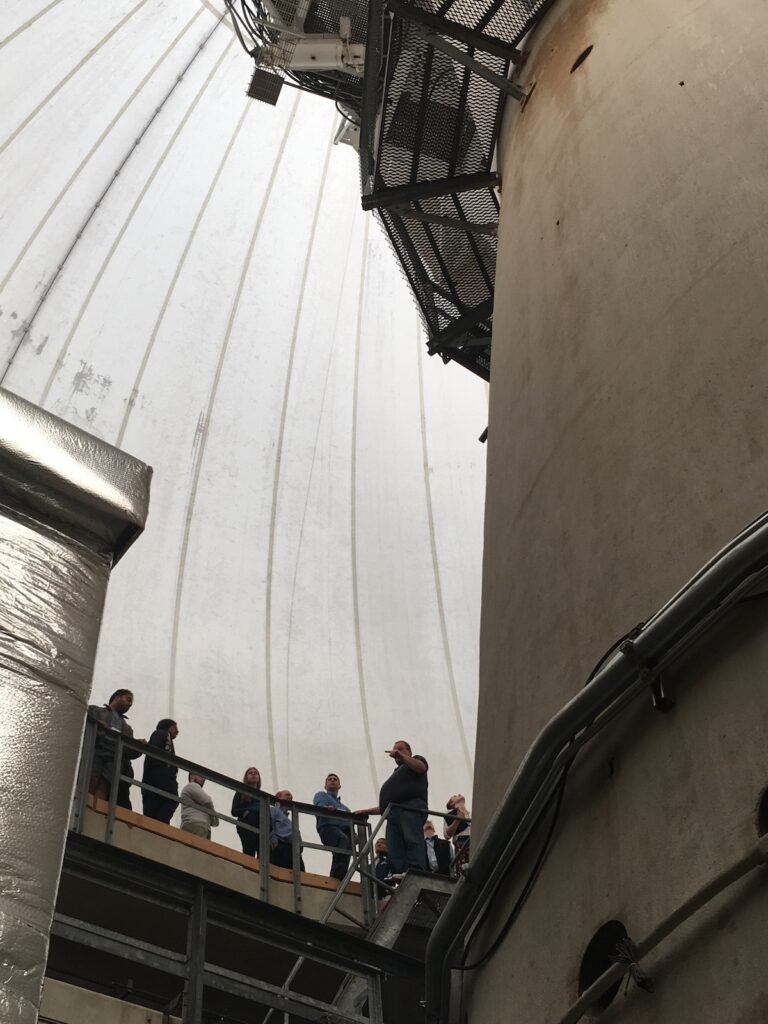
Westford Radio Telescope
The Westford Radio Telescope is a primary geodetic very long baseline interferometry (VLBI) site located 45 minutes northwest of Boston, Massachusetts.
Download the Westford Radio Telescope brochure
Geodesy
Geodesy is the science of accurately measuring the geometric shape of the earth, its orientation in space, and its gravity field, including how these properties change over time. Haystack scientists and engineers make geodetic observations using a technique called very long baseline interferometry (VLBI). The technique allows data from pairs of radio telescopes spread out all across the globe to be combined, resulting in measurements that are more precise (in the sense of spatial resolution) than those of a single telescope. Haystack scientists also use data from other space geodetic techniques such as the global navigation satellites system (GNSS).
Westford is a fundamental station for the broadband VLBI Global Observing System (VGOS), the next-generation VLBI network. VGOS will support all aspects of earth system observations, and will enable sea-level measurements with an accuracy about 10 times greater than current capabilities.
Westford is a station of the expanding VGOS network of the NASA Space Geodesy Project (SGP). Observations with the NASA VGOS network in collaboration with partners from the International VLBI Service for Geodesy and Astrometry (IVS) will contribute to the determination of earth’s shape and rotation with unprecedented accuracy.

Origin and historical usage
The Westford telescope was constructed in 1961 as part of Project West Ford at Lincoln Laboratory, to demonstrate the feasibility of long-distance communication by bouncing radio signals off a spacecraft-deployed belt of copper dipoles at an altitude of 3,600 km.
Westford was converted to geodetic use in 1981 as one of the first two VLBI stations of Project POLARIS (National Geodetic Survey [NGS]) and has participated in geodetic VLBI observations on a regular basis ever since.
The site also serves as a testbed for the development of significant new equipment and techniques now employed in geodetic VLBI worldwide, and has also been a GNSS fiducial point since the 1990s.
Equipment and capabilities
Westford is an 18.3-m broadband VLBI radio telescope currently operating in the 2–14 GHz frequency range. It is protected from the elements by a 28-meter-diameter, air-inflated radome constructed of 1.2-mm-thick Teflon(TM) fabric.
Major components of the VGOS data acquisition system at Westford include the following:
- Cryogenically cooled frontend
- Fiber-optic radio frequency (RF) downlinks and distributor
- Up-down converters (UDCs)
- ROACH digital backends (R2DBEs)
- Mark 6 recorder with expansion chassis
- Field control system
- Hydrogen maser frequency standard
Site manager: Alex Burns